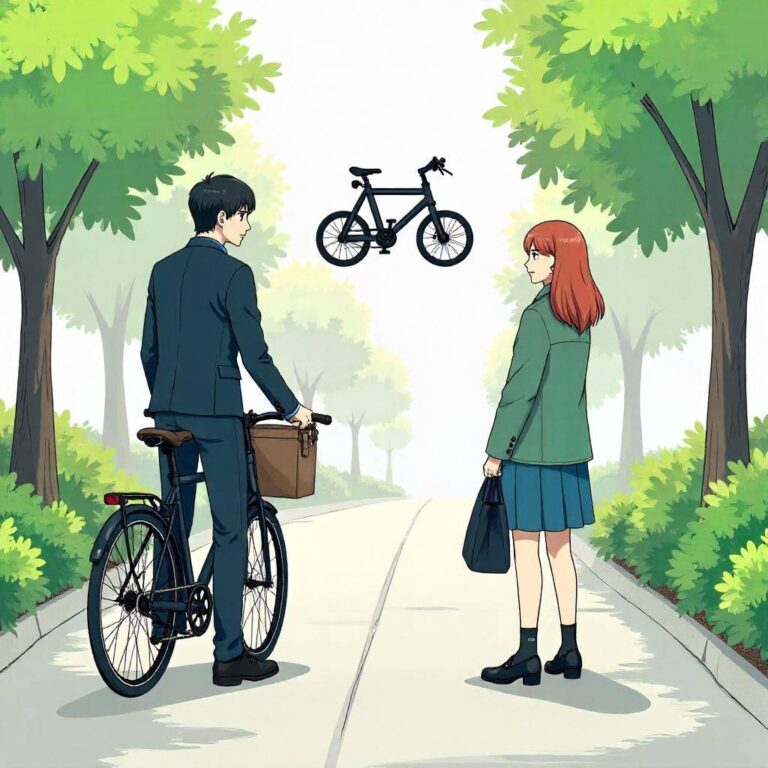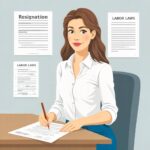Question from a reader:
I was hit by a bicycle; how should I handle it? Earlier, while I was walking on the sidewalk, a bicycle came up from behind and made contact with me. The sidewalk is slightly elevated compared to the road and is just wide enough for two people to walk side by side. It’s not possible to pass
each other, so one person has to walk in front of the other. There are no signs indicating that bicycles are allowed on the sidewalk. There are white lines drawn on the road, and I often see bicycles riding there, but many bicycles also ride on the sidewalk. I occasionally witness contact accidents. At the time of the incident, I was walking alone and saw a person coming toward me. I didn’t notice the bicycle, and no bell was rung. I think the cyclist may have collided with me to avoid hitting the person coming from the opposite direction. Since it was night, I might not have been able to gauge the distance to the person approaching. I wasn’t wearing earbuds. The person riding the bicycle was a woman on a mama-chari. I injured my knee from the contact, and in trying to brace myself to avoid falling, I twisted my ankle. At that moment, I was so surprised that I couldn’t even speak, and after hitting me, the woman on the bicycle slowed down, put her foot down, glanced at me, and then just rode away. The pedestrian coming from the opposite direction turned before reaching us. Now, my elbow hurts, but especially my ankle. I’m unsure whether I should go to the emergency hospital, but I’m worried about driving to work starting Monday. Is there any way to address the bicycle contact accident? Since I didn’t fall and hit my head, is it difficult? In a car accident, I would contact my insurance company, but this time it’s different.
What to Do If You Experience a Bicycle Contact Accident? Let’s Consider It from a Legal Perspective
Hello everyone. Today, I want to talk about a rather serious topic: bicycle contact accidents. When walking on the sidewalk, bicycles sometimes pass by from behind, right? We always need to be aware of whether it’s safe for bicycles to be there. Today, let’s think about how to handle a situation where you’ve actually been hit by a bicycle, from a legal standpoint.
Reflecting on the Incident
First, regarding your case, it happened at night. The bicycle made contact with you to avoid a collision with a pedestrian coming from the opposite direction. The cyclist was a woman, and it seems this accident was clearly a result of negligence on her part. I might also be so surprised in a similar situation that I wouldn’t be able to speak. Especially when physical pain is involved, it can be even more alarming. Bicycle contact accidents are not uncommon, especially on sidewalks. In recent years, cycling has become popular, and the number of bicycles has increased, leading to more opportunities for such accidents. Now, here’s the important point: let’s think about how to respond after the accident occurs.
First, Check Your Body
After the accident, the first thing you should do is check the condition of your body. You mentioned pain in your elbow, knee, and especially your ankle, which are all signs that should not be ignored. Particularly with your ankle, there could be a possibility of a sprain or fracture, so I recommend that you get it checked at a hospital without pushing yourself. You might think, “Oh, but it’s probably not that serious,” but it’s best to avoid regretting it later. If there happens to be a fracture or another serious injury, leaving it untreated can prolong the healing process. If you feel pain, it’s wise to go to a medical facility without hesitation.
Document the Accident
Next, it’s important to document the details of the accident. Make a note of the cyclist’s characteristics, the location of the contact, the time, and the circumstances as thoroughly as possible. If there were any witnesses, it’s also good to get their names and contact information. Especially if the pedestrian coming from the opposite direction witnessed the accident, their testimony may be helpful later. If possible, taking photos of the scene can help you better understand the circumstances of the accident. Such information is very useful for future negotiations and insurance claims.
Responsibility of the Cyclist
Now, typically, the person riding the bicycle also has a certain level of responsibility. When a contact accident occurs, whether the cyclist neglected their duty of care is an important point. In this case, the woman did not ring her bell and seemed unaware of you, which could be seen as a lack of duty of care. This raises the question, “How can I hold the woman on the bicycle accountable?” In this case, the documentation of the accident will be helpful. If you have her contact information, it might be a good idea to reach out to her directly. Depending on the situation, you may also want to consider consulting the police and having them create an accident report.
About Insurance
In bicycle accidents, the handling of insurance is a bit more complex compared to car accidents. Depending on the insurance the cyclist has, there may be compensation available under certain conditions. Particularly if they have bicycle insurance or personal liability insurance, it might be possible to claim medical expenses through their insurance. However, make sure to check your own insurance as well. If your health insurance or accident insurance applies, you can proceed with the necessary procedures quickly.
Finally, Don’t Forget About Mental Care
While physical care is the top priority, mental care after the accident is also important. Especially since contact accidents can involve shock and fear, psychological stress may linger. If necessary, consider seeking counseling. I can imagine how much a bicycle contact accident could affect someone mentally. If I were in that situation, I might become a bit afraid of riding a bicycle. In such times, talking to others can help in sorting out your feelings.
Conclusion
Contact accidents can happen to anyone, but knowing the correct way to respond can help avoid future troubles. It’s important to prioritize your own health, document the details of the accident, contact the other party if necessary, and check your insurance. Additionally, don’t forget about mental care, and if needed, consult a professional. Lastly, even if you encounter an accident, your health and safety should be your top priority. Take care not to push yourself and act calmly. Everyone, please be mindful of safe traffic environments and enjoy your daily life. Until next time, see you in the next post!



